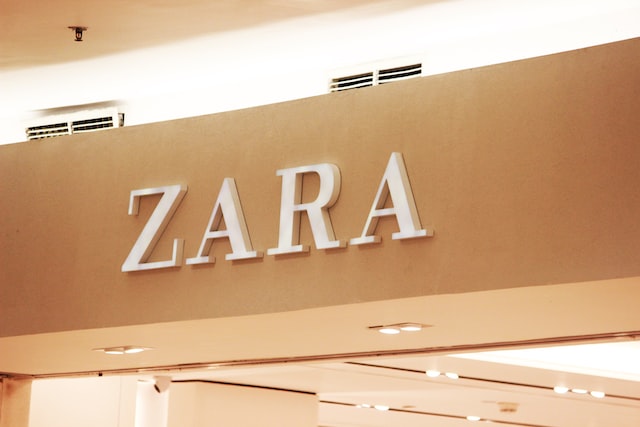Before we get into the specifics of Zara, let’s understand competitor analysis. Competitor analysis is a strategic research method companies use to identify, evaluate, and understand their current and potential competitors within the market. It’s an essential business strategy component and instrumental in understanding the industry landscape.
The process usually involves the following steps:
- Identifying Key Competitors: The first step is to identify who your competitors are. These may be direct competitors (those who offer the same or similar products or services as you) or indirect competitors (those who provide different products or services but compete for the same consumer dollar).
- Analyzing Competitors’ Strategies and Objectives: Once competitors are identified, the next step is to understand their business strategies and objectives. This may involve analyzing their marketing materials, financial performance, customer reviews, or any public information available about the company.
- Assessing Competitors’ Strengths and Weaknesses: This step involves evaluating the identified competitors’ strengths and weaknesses. Strengths include unique products or services, strong brand recognition, and superior customer service. Weaknesses include poor product quality, weak customer service, or high prices.
- Understanding Competitors’ Products/Services: Understanding what your competitors offer and how your products or services compare is important. This could involve looking at features, quality, pricing, customer service, and marketing strategies.
- Observing Competitors’ Reaction Patterns: Some companies react more aggressively than others when faced with competition. Understanding these patterns lets you predict how these companies might respond to your business strategies.
- Drawing Conclusions and Formulating Strategy: The final step is to take all the information gathered from the analysis, draw meaningful conclusions, and use those to formulate or adjust your business strategies.
The main goal of a competitor analysis is to understand the competitive landscape, spot opportunities, and threats, and position your company most advantageously. It helps to inform strategic decisions, from product development to marketing and sales efforts. Now let’s do a competitor analysis of Zara.
- How Zara became the undisputed king of fast fashion?
- Zara SWOT Analysis
- Zara Marketing Mix (4Ps)
- Zara PESTEL Analysis
Here is the competitor analysis of Zara
H&M
Zara (Inditex) and H&M are two giants of the fast-fashion world, each with a distinct approach to their business model, which makes their competition interesting.
- Speed to Market: Zara is famous for its quick turnaround time in fashion retail. It can design, produce, and have a product in-store within just a few weeks, allowing the company to respond quickly to changing fashion trends. In comparison, H&M traditionally has longer lead times, but it has been improving its agility and reducing these times in response to competition.
- Supply Chain Management: Zara maintains a significant portion of its manufacturing in Spain and nearby countries, which aids its speed to market. H&M, on the other hand, sources a significant portion of its products from Asian countries like China and Bangladesh, which helps keep costs down but can lead to longer lead times.
- Pricing Strategy: H&M often has lower price points compared to Zara, appealing to a more price-sensitive demographic. Zara has a slightly higher price point, positioning itself as a more premium brand within the fast-fashion industry.
- Product Range: Zara tends to focus on a relatively narrower range of trendy styles and rotates its stock more frequently. This encourages customers to buy immediately and visit often. H&M has a broader product range, including collaborations with high-fashion designers and a greater emphasis on basics and staple pieces.
- Sustainability: Both Zara and H&M have been increasingly focusing on sustainability due to growing consumer demand. H&M has the “Conscious Collection,” while Zara has committed to making all its clothes from sustainable fabrics by 2025.
- E-commerce: Both Zara and H&M have been investing heavily in e-commerce to respond to shifts in shopping behaviors, especially in the wake of the COVID-19 pandemic. They both have robust online shopping platforms and are working to integrate their online and offline experiences.
Uniqlo
- Business Model: Zara’s business model is based on providing the latest fashion trends quickly. They can move from design to store shelf in just a few weeks, keeping their offerings fresh and updated. On the other hand, Uniqlo takes a different approach and focuses more on providing high-quality basic items that are “made for all.” They do not follow fashion trends as closely as Zara.
- Pricing: Both Zara and Uniqlo aim to provide value for money, but they do so in different ways. Zara offers trendy items at relatively affordable prices. Uniqlo prices are also affordable, but they focus more on the quality and durability of their products.
- Production: Zara’s production is more geographically distributed, with many items produced in Spain, Portugal, and Turkey. This proximity to their primary markets in Europe allows for faster turnaround times. On the other hand, Uniqlo outsources much of its production to factories in China, which contributes to cost savings but may involve longer lead times.
- Product Range: Zara’s product range continually changes, with new items introduced frequently to reflect the latest fashion trends. Uniqlo has a more stable product range focusing on timeless basics. They also invest significantly in fabric technology to create innovative products, like their HEATTECH line.
- Store Experience: Zara stores often reflect a high-fashion aesthetic and are frequently updated with new items, making sense of urgency for shoppers. Uniqlo stores have a more consistent layout and design, emphasizing product quality and technology.
- Sustainability: Both brands have initiatives for sustainability but with different focuses. Zara’s parent company, Inditex, has committed to using sustainable fabrics and achieving zero landfill waste. Uniqlo’s parent company, Fast Retailing, focuses on recycling and has initiatives for clothes recycling and down recycling for its jackets.
- How Uniqlo is Set to Become the World’s top fashion retailer
- Uniqlo SWOT Analysis
- Uniqlo PESTEL Analysis
Gap
- Business Model: Zara has a fast-fashion business model that focuses on rapidly turning around new fashion trends. The company moves from design to store shelf in just a few weeks, keeping its offerings fresh and updated. Gap, however, focuses more on classic, iconic styles rather than high-frequency trend turnover. Gap’s styles change less frequently and tend to be more timeless.
- Product Range: Zara’s product range is very dynamic, with a large number of styles that are continually changing. This creates a sense of urgency for shoppers as items can quickly disappear from stores. In contrast, Gap offers a more consistent product range, focusing on staple items like jeans, t-shirts, and hoodies that remain relatively constant over time.
- Brand Perception: Zara is perceived as more fashion-forward, emphasizing trends and style. Gap is often seen as a provider of casual, comfortable, and durable clothing ideal for everyday wear.
- Pricing: While both Zara and Gap operate in the affordable range, Zara’s prices can sometimes be slightly higher, reflecting its fashion-forward image. Gap, known for its regular sales and promotions, often comes across as a more budget-friendly option.
- Supply Chain: Zara’s supply chain is built for speed and agility, with a significant proportion of production in close proximity to its headquarters in Spain. This allows for quick responses to fashion trends. On the other hand, Gap sources a lot of its production from overseas, especially in Asia.
- Online Presence: As of 2021, both Zara and Gap have been investing heavily in e-commerce and digital transformation, given the shift in consumer behaviors.
- Sustainability: As of 2021, both brands have started paying more attention to sustainability. Zara’s parent company, Inditex, announced plans for more sustainable fabrics and reducing waste. Gap Inc. also announced goals for reducing water use and greenhouse gas emissions in its supply chain.
Mango
- Business Model: Both Zara and Mango operate on a fast-fashion model, with a focus on trendy, affordable clothes. Zara, however, is often lauded for its exceptional speed in moving designs from the runway to store shelves, sometimes in a matter of weeks.
- Product Range: Both brands offer clothing for men, women, and children, along with accessories. Zara’s product range is vast and frequently updated, providing customers various options and the latest trends. Mango, while also trendy, typically has a smaller, more curated collection each season.
- Pricing: Zara’s pricing is slightly varied, with lower-cost and higher-priced pieces. Mango’s pricing tends to be a bit more consistent, often positioned in the slightly higher range compared to Zara, reflecting their focus on quality and a more refined style.
- Target Audience: Both brands target a similar demographic – fashion-conscious individuals who value affordability. However, Mango has often been seen as targeting a slightly older demographic with a more refined taste, compared to Zara’s broad appeal to all ages.
- Style & Aesthetic: Zara is known for its trendy, runway-inspired clothing, which can vary significantly from minimalist to more extravagant. Conversely, Mango tends to lean towards a more classic, Mediterranean-inspired aesthetic, focusing on chic and elegant designs.
- Supply Chain Management: As part of the Inditex group, Zara has an incredibly responsive and flexible supply chain allows for rapid turnaround of new styles. Mango also has a fast supply chain, though perhaps not as quick as Zara’s.
- Store Presence and E-Commerce: Both Zara and Mango have a strong retail presence worldwide, with flagship stores in major cities. They have also invested in e-commerce, recognizing the growing importance of online shopping.
- Sustainability: As of 2021, both companies have launched initiatives to increase sustainability. Zara’s parent company, Inditex, has pledged to use 100% sustainable fabrics by 2025, while Mango has launched a sustainable clothing line called “Mango Committed.”
ASOS
- Business Model and Target Market: Zara is a high-street retailer known for its fast-fashion business model, focusing on the rapid turnover of on-trend styles. On the other hand, ASOS is an online retailer that targets a younger demographic, offering a vast selection of trendy clothing and accessories from various brands, including its own label.
- Brand Variety: While Zara sells only its brand in stores and online, ASOS sells a wide variety of brands. This allows ASOS to offer diverse styles, prices, and fits, including petite, tall, plus-size, and maternity ranges.
- Pricing: Zara’s pricing can vary significantly, with lower- and higher-priced items. ASOS also offers a wide price range but has the flexibility of providing very affordable pieces from lesser-known brands to more expensive items from well-known designers.
- Speed to Market: Zara’s supply chain is built for speed, allowing it to quickly turn around new designs based on the latest fashion trends. ASOS, by offering a variety of brands, updates its collections based on the availability and designs of the brands it retails.
- Physical vs. Online Presence: Zara has a significant physical retail presence with stores worldwide and its online platform. ASOS, on the other hand, is purely an online retailer.
- E-commerce and Delivery: Both Zara and ASOS have invested heavily in their e-commerce platforms. However, being exclusively online, ASOS offers a range of delivery options (including next-day and even same-day delivery in some locations) and free returns, which adds to its competitive advantage.
- Sustainability: Both Zara and ASOS have sustainability initiatives. Zara’s parent company, Inditex, has committed to using 100% sustainable fabrics by 2025. ASOS has launched a “responsible edit” – a curated selection of clothes, accessories, and gifts that are sourced sustainably and ethically.
Primark
- Business Model: Zara operates on a fast-fashion model known for its ability to bring high-fashion-inspired designs from the runway to stores rapidly. This quick turnaround of designs allows Zara to stay on top of current trends. On the other hand, Primark’s model is based on highly low-cost clothing. While they do offer trendy pieces, their main appeal is the affordability of their products.
- Pricing: Zara’s products are usually priced higher than Primark’s. While affordable compared to high-end fashion brands, Zara positions itself as a more premium brand in the fast-fashion industry. On the other hand, Primark is known for its very low prices and is one of the cheapest fashion retailers in the market.
- Product Range: Both brands offer a wide range of products for men, women, and children. Zara’s product range is very dynamic, with a large number of styles that are continually changing. Primark also offers a variety of styles, but its product range is more stable and less influenced by seasonal trends.
- Quality Perception: Due to its higher price points and fashion-forward designs, Zara is often perceived as offering better quality products than Primark. However, Primark’s extremely low prices often lead to a perception of lower quality.
- Sustainability: As of 2021, Zara’s parent company, Inditex, has made sustainability a part of its business model, with pledges to use sustainable fabrics and reduce waste. Primark has also taken steps towards sustainability, although its low-cost model can make this more challenging.
- Physical Presence and Online Sales: Zara has a significant physical presence with stores worldwide and a solid online sales platform. On the other hand, Primark has an extensive network of physical stores but does not sell products online. This is a significant difference in their business models, with Zara offering multichannel sales while Primark entirely depends on in-store sales.
Forever 21
- Business Model: Zara is known for its fast-fashion business model, focusing on speed and flexibility. They are renowned for taking a design from the drawing board to the store floor in just a few weeks, allowing them to respond quickly to changing trends. Forever 21 also operates on a fast-fashion model, but traditionally they’ve emphasized low prices and high volumes.
- Product Range: Both Zara and Forever 21 offer a wide range of clothing for men, women, and children, as well as accessories. However, Zara’s product range is generally considered more fashion-forward, with designs that often reflect the latest high-fashion trends. Forever 21 also offers trendy items, but they have a broader range of casual and basic pieces.
- Pricing: Zara’s pricing tends to be a bit higher than Forever 21’s, reflecting its positioning as a slightly more upmarket brand within the fast-fashion industry. Forever 21 generally offers lower prices, appealing to a more price-sensitive demographic.
- Quality: Both brands offer affordable clothing, but Zara is often perceived as having better quality compared to Forever 21 due to its slightly higher price points and fashion-forward image.
- Brand Image: Zara is perceived as a more premium brand within the fast-fashion industry and is known for its sophisticated and trendy designs. Forever 21 is seen as a go-to destination for youthful, fun, and budget-friendly fashion.
- Physical Presence and Online Sales: Both Zara and Forever 21 have significant physical retail presence worldwide. However, Zara has a strong online sales platform, whereas Forever 21 has faced challenges establishing a successful e-commerce presence.
- Sustainability: Zara’s parent company, Inditex, has been vocal about its sustainability efforts, pledging to use 100% sustainable fabrics by 2025. Forever 21, as of 2021, has been less public about sustainability initiatives, although the pressure for fast-fashion retailers to address sustainability is growing.











